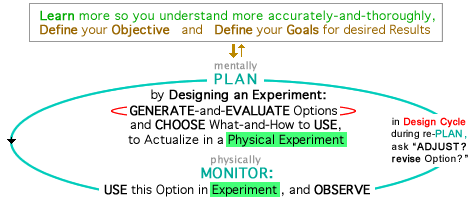Diagram 1
build Educational Bridges` ,
Stage 1 of Design Process`
The SIMPLICITY of
problem-solving Design Process:
Define a Problem (Learn, Define Define)
and try to Solve the Problem by
Generating and Evaluating Ideas
about Options for a Problem-Solution.
problem-solving Design Process:
Define a Problem (Learn, Define Define)
and try to Solve the Problem by
Generating and Evaluating Ideas
about Options for a Problem-Solution.
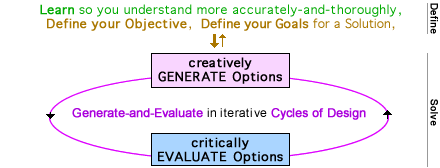
Diagram 3a - Stage 3`
3 Elements ( P G O ) are used in 3 Comparisons:
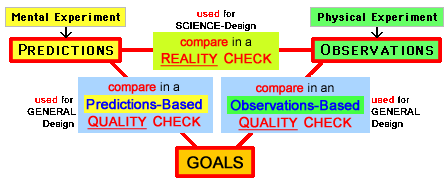
Diagram 2a
Simplicity + Symmetry ` ,
Help Students Discover `
The SYMMETRY of
mental & physical :
How do you EVALUATE ?
you Design Experiments
(with Experiment defined as Situation-for-Experience)
and you Do Experiments
mentally (by imagining) & physically (by actualizing)
that let you make
mental PREDICTIONS & physical OBSERVATIONS
and you Use Experiments
(that produce Experiences, allow making Information)
to do two kinds of QUALITY CHECKS that are
EVALUATIONS with quality defined by your Goals,
to learn from your (mental & physical) experiences.
mental & physical :
How do you EVALUATE ?
you Design Experiments
(with Experiment defined as Situation-for-Experience)
and you Do Experiments
mentally (by imagining) & physically (by actualizing)
that let you make
mental PREDICTIONS & physical OBSERVATIONS
and you Use Experiments
(that produce Experiences, allow making Information)
to do two kinds of QUALITY CHECKS that are
EVALUATIONS with quality defined by your Goals,
to learn from your (mental & physical) experiences.
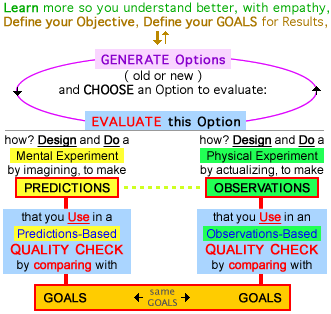
Diagram 3b, for Stage 3`:
creative GENERATION is guided by critical EVALUATION
when you ask “revise?” in a Design Cycle or Science Cycle,
when you ask “revise?” in a Design Cycle or Science Cycle,
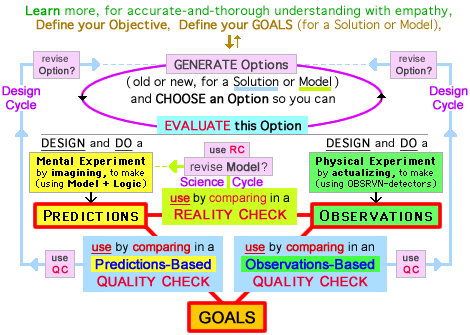
To learn by discovery you can study this diagram (above) and think about
problem-solving process, asking “what part of problem-solving process
is in each part of this diagram?” And to also learn from explanations,
put this diagram – which (i.o.u.) will again be a "Clicker Map" after I have
properly re-located the links-to-click) – into the left frame` and click on
on any of its 23 link-areas, so you can learn by reading about each area.
The diagram below is discussed near the end of my page about
Using a Process of Inquiry to teach Principles for Inquiry.

